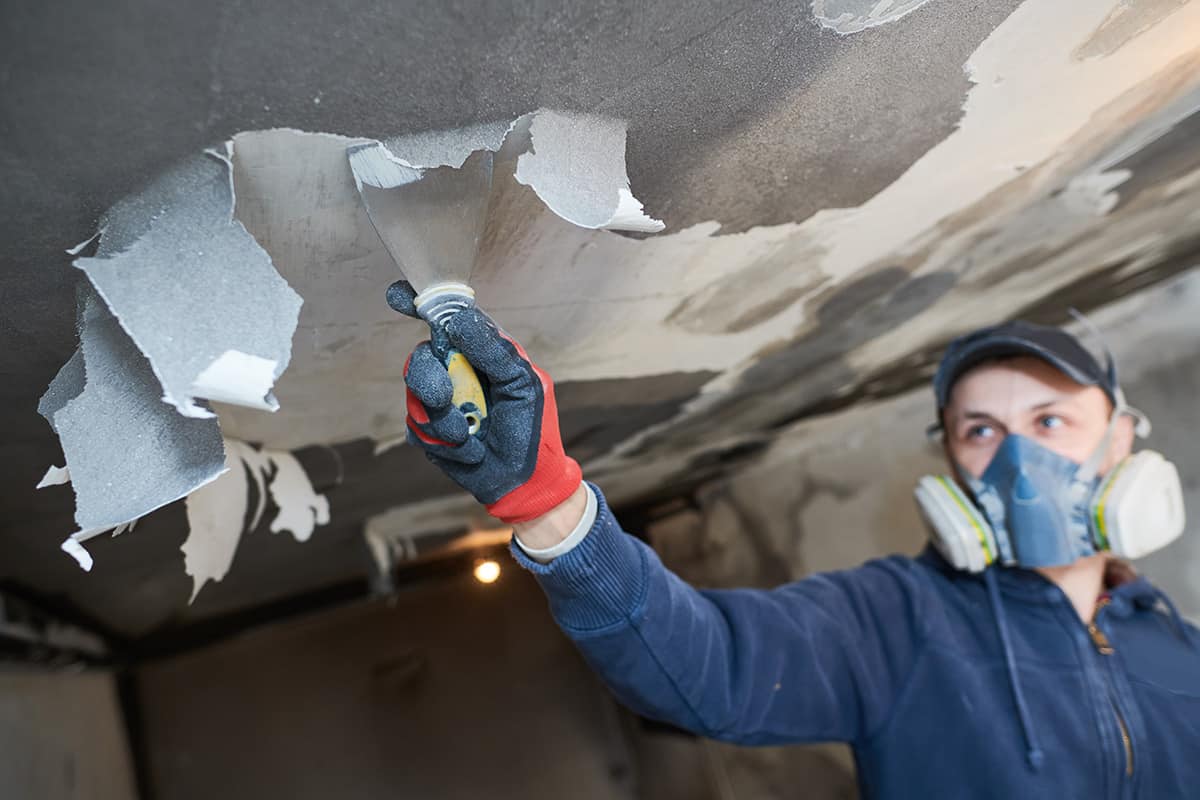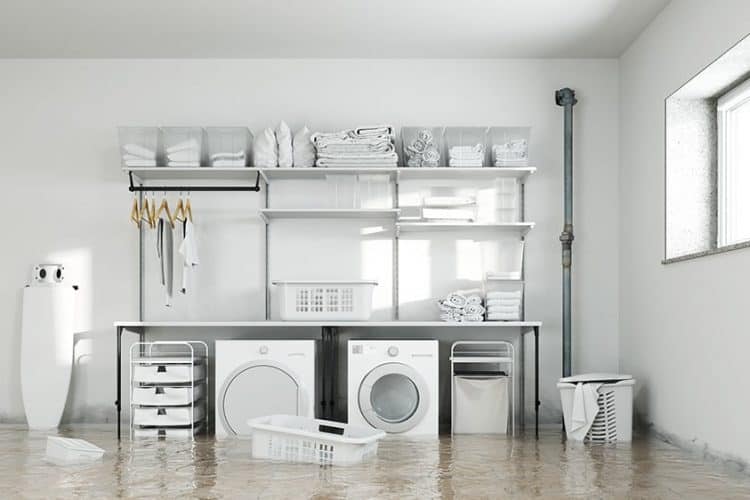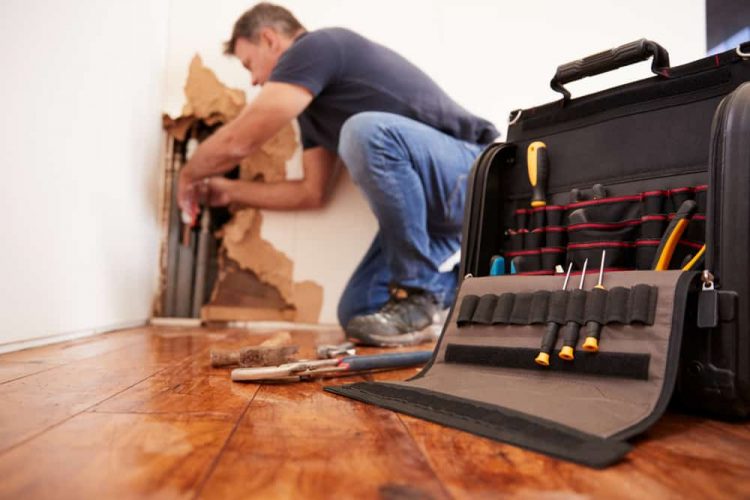
fire damage and restoration indoor interior. removing damaged paint layer
In 2020, the National Fire Protection Association estimates there was nearly $22 billion in property damage caused by fires. So, if you find yourself cleaning up your home from fire damage, it can be very overwhelming. Here’s where to start and how the process looks.
Getting Started
Before you even begin sifting through your belongings, getting a safety inspection by a fire marshal or insurance representative is crucial. There could be hidden damage to electrical wiring, wall supports, or the foundation that needs correcting before you begin spending time in the fire-damaged building. You will also want a damage assessment performed by your insurance company to help reclaim any costs.
You can do more damage if you incorrectly clean the smoke and soot. So, consider hiring a company that specializes in that type of cleanup. Professionals will know how to manage everything that falls under fire damage cleanup. That includes water damage, smoke damage, and fire damage. Restoration professionals can do everything from deodorizing furniture to determining if thermal fogging or ozone smoke removal is the best option.
You will also want to consult a professional about replacing drywall and insulation soaked by water used to put out the fire. The American Red Cross says that drywall and insulation cannot dry out and maintain structural integrity or resistance to mold and mildew.
At 1-800-Water damage, one call handles all restoration needs. We provide cleanup for water, flood, fire, smoke, and mold damage, as well as sewage, biohazard, and carpet cleanings. In addition, we offer a 24/7 emergency service line, allowing you to reach us as soon as the emergency happens.
How Much Will Fire Damage Cleanup Cost?
While hiring a restoration professional sounds expensive, making mistakes or delaying cleanup can cost you even more. For example, rain getting inside the compromised home will cause more water damage, or mold will continue growing inside the house.
Thumbtack.com says costs can average from $3,000 to $5,000 to recover and restore your home after a small fire. Larger fires that destroy your roof or kitchen can cost as high as $50,000 or more. Property size and damage extent are considered for calculating the cost. During a fire, smoke normally enters your heating and cooling ducts. So, you’ll also want an HVAC system evaluation, which can cost between $150 and $500, with repair costing upwards of $1,000 if needed.
Luckily, standard homeowner’s policies include coverage for fire damage. The terms of your policy will dictate whether reimbursement is at replacement value or depreciated value. Replacement value means the insurance company pays what it costs to replace the lost item with a comparable piece. Depreciated value is what the item is worth now.
What to Do in the Meantime
Once insurance has assessed the damage and you have a restoration company scheduled, secure your home, and take undamaged or accessible items with you. A restoration company might take some time to make it to your property. You can take a few steps to start the cleanup process in the meantime. The National Institute of Restoration recommends not leaving books, magazines, or other colored items on the wet floors, as the dyes will stain the flooring. You can try to mop or blot up as much water off the floors as possible. Dehumidifiers and fans will also help dry wet materials.
You will want to keep windows open as much as possible to air out the house. You can also constantly run the fan on the HVAC system to move the air around. Make sure to replace the filter daily until soot is no longer visible.
If you’re doing any cleanup on your own, do NOT use water or other cleaning solutions. FEMA says water will drive soot further into the surface, becoming impossible to remove. Keepsakes like photo albums may stick together. The agency recommends not prying them apart but taking them to a conservator for advice. It’s also important to note that heat can make glass, ceramic, and metal items very brittle — handle them carefully.
Throw These Items Out
Not everything is worth saving after a fire, even items untouched by flames. This list from The Spruce shows what items to toss during fire damage cleanup:
- Perishable Food – If the electricity has been off for more than four hours, toss most refrigerated and frozen food.
- Non-Perishable Food – Toss any foods, even canned goods, exposed to heat or firefighting chemicals. Excessive heat can cause food to spoil.
- Cosmetics and Medicines – Water, smoke, firefighting chemicals, and excessively high temperatures can ruin cosmetics and medicines.
- Electrical Equipment – No electrical items like small appliances or entertainment equipment should be used until they have been checked for water damage and heat damage to wiring. Toss any questionable items to avoid the possibility of another fire.
Contact 1-800-Water Damage
A fire can be a traumatic event; contact 1-800-Water Damage to help you through the process. With our 24/7 emergency services, you can count on our trusted local teams to be ready to help you with your fire damage restoration right away.



